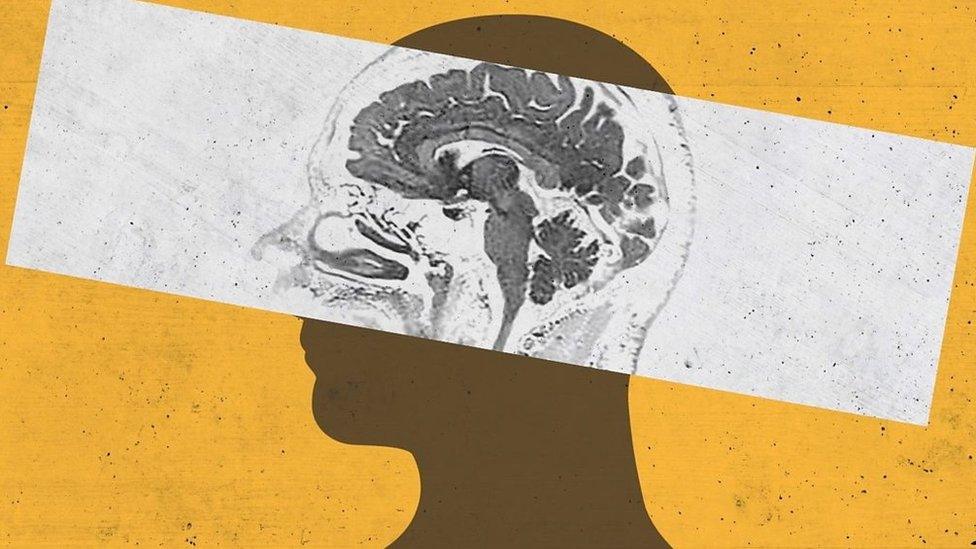Coronavirus: Is the pandemic getting worse in the US?
- Published

The news in the US has been dominated by anti-racism protests in recent weeks, but coronavirus is now back in the headlines.
Several states have seen a record number of cases this week, leading to fears that the country is experiencing a second wave of infections.
But Vice-President Mike Pence said those fears were "overblown" and accused the media, external of using "grim predictions" to scare the American people.
So what is going on in the US?

The number of infections is going up
With about 2.5 million coronavirus cases, the US has the highest number of confirmed infections in the world - about a quarter of the global total.
The situation got really bad in late March but by May, cases were declining and most states had begun to ease restrictions put into place to halt the spread of the virus.
The number of new cases rarely fell below 20,000 though, because as some states were bringing their outbreaks under control, others were only just beginning to see flare-ups.
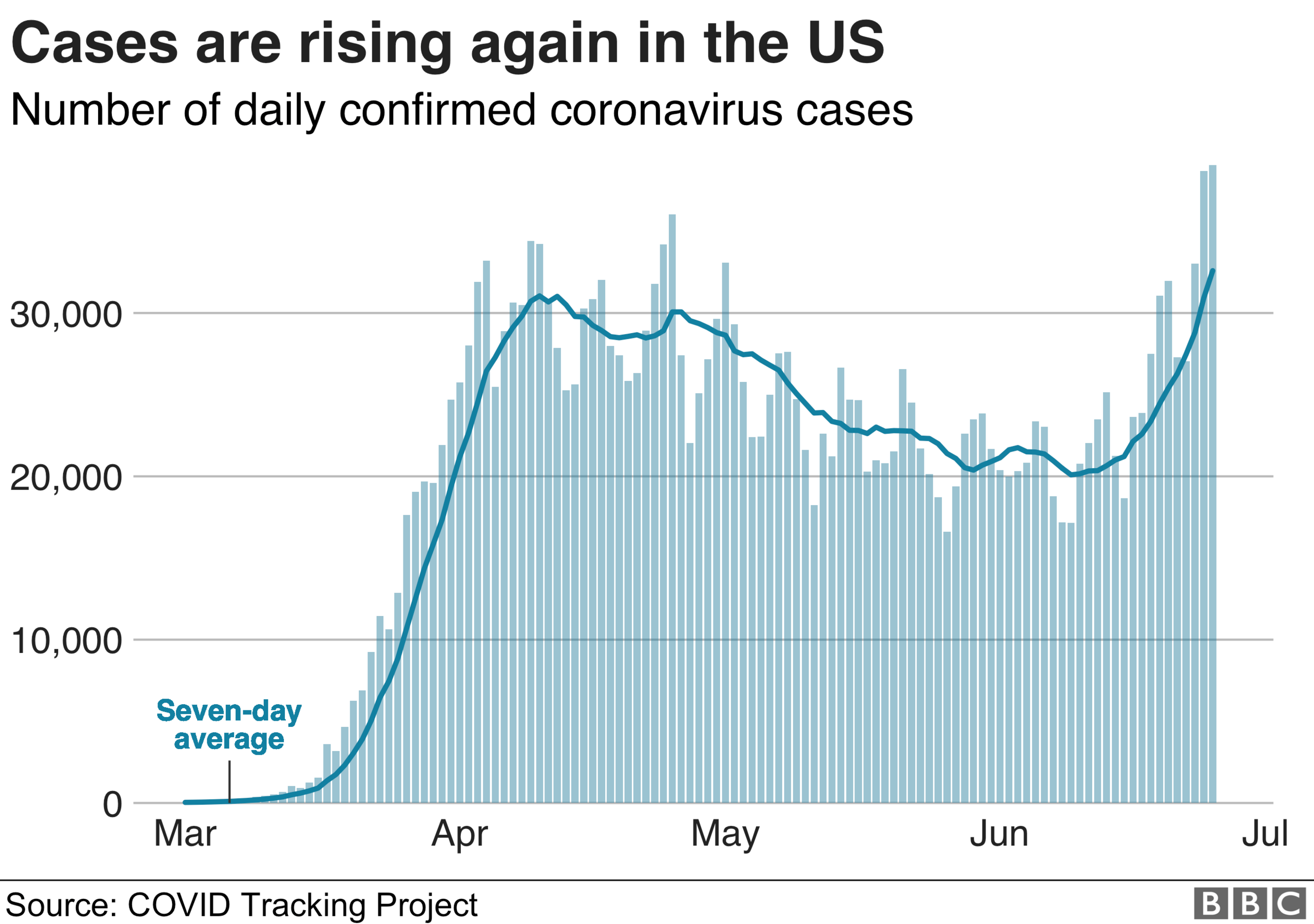

For this reason, the top US health official for infectious diseases, Anthony Fauci, sees the current situation as a continuation of the initial outbreaks.
"People keep talking about a second wave," he told a reporter, external recently. "We're still in a first wave."
Spikes in those new hotspots mean the number of daily cases has been higher twice this week than previous record back in late April, according to data compiled by the COVID Tracking Project, external.
But it's important to note that the number of tests being carried out now is about double what it was in April and May so it's likely the true scale of that outbreak wasn't fully captured.

There are big regional differences
The North East has been by far the worst-hit region, with about a quarter of all US cases and more than a third of all US deaths occurring in the states of New York and New Jersey. But in recent weeks, the region has brought its outbreaks under control.
The South and West of the country, on the other hand, have seen a big rise in the number of infections. The Midwest is also starting to see an increase.
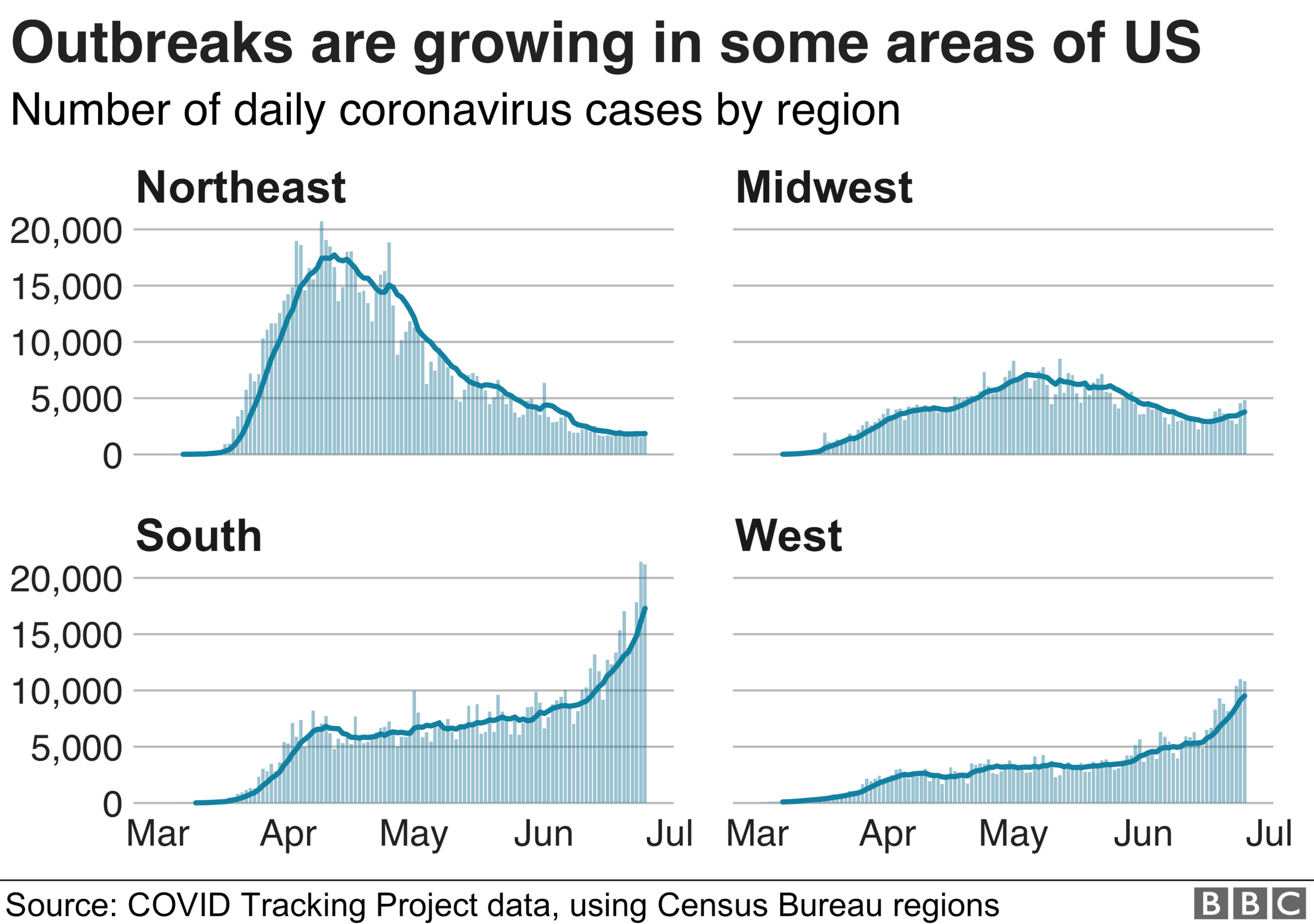

There's no debate over whether cases are going up again, but there is over why.
President Donald Trump blames it on increased testing, telling the Wall Street Journal, external he thinks "testing is overrated" because "in many ways, it makes us look bad."
The US has conducted about 30 million tests so that does go some way to explaining why it has the highest number of cases in the world, although international comparisons are difficult to make for a number of reasons.
But there's plenty of evidence to suggest the recent rise in infections is down to more than just a higher number of people being tested.

The rise in cases isn't just down to more testing
In recent days, Arizona, California, Florida and Texas have seen more new cases on their own than the entire nine-state North East region and that's not just down to increased testing.
This is clear when you look at the rate of coronavirus tests that are coming back positive.
If lots of tests are being done and the spread of the virus has been reduced, then the positive case rate would go down too. If the virus is still being spread widely, it goes up.
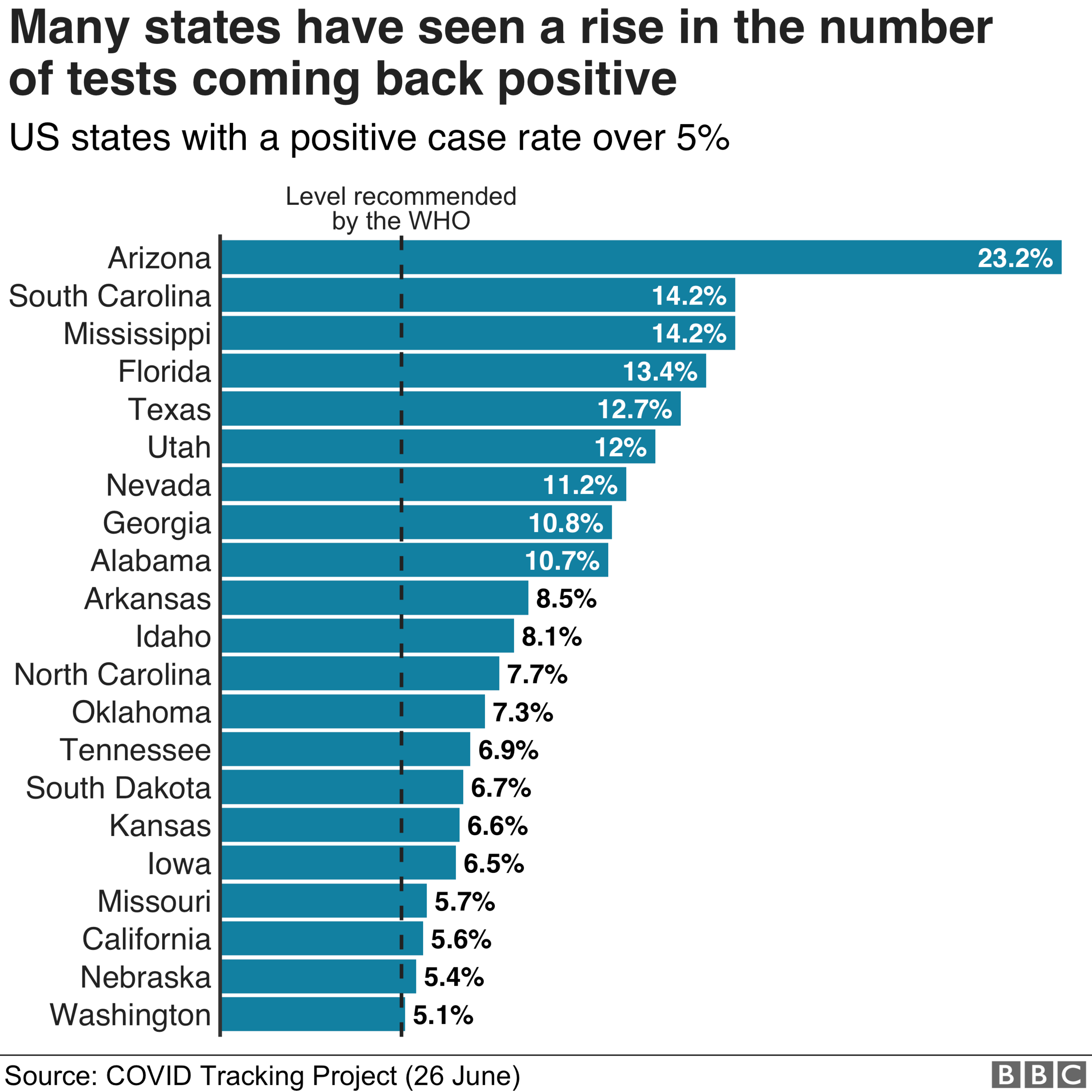

The World Health Organization recommends that countries have a positive case rate at or below 5% for 14 days before they ease restrictions on movement. The US was at or below this point for a few days in the middle of June, but the national rate is currently about 6%, external.
That increase nationally is because more than a third of states are now above that level, as the chart above shows, and all of them have reopened to some extent, external over the last month.
One state that has seen an increase in cases since reopening is Texas, where bars have now been told to close their doors again by Governor Greg Abbott in a bid to slow the infection rate. An easing of restrictions has also been paused in Florida.
Much of the recent surge in the South and the West has been driven by younger people "newly mobile after months of lockdowns," according to Robert Redfield, the head of the US Centers for Disease Control and Prevention (CDC).
He said many of these infections would have gone undiagnosed earlier on in the outbreak because fewer tests were being carried out.
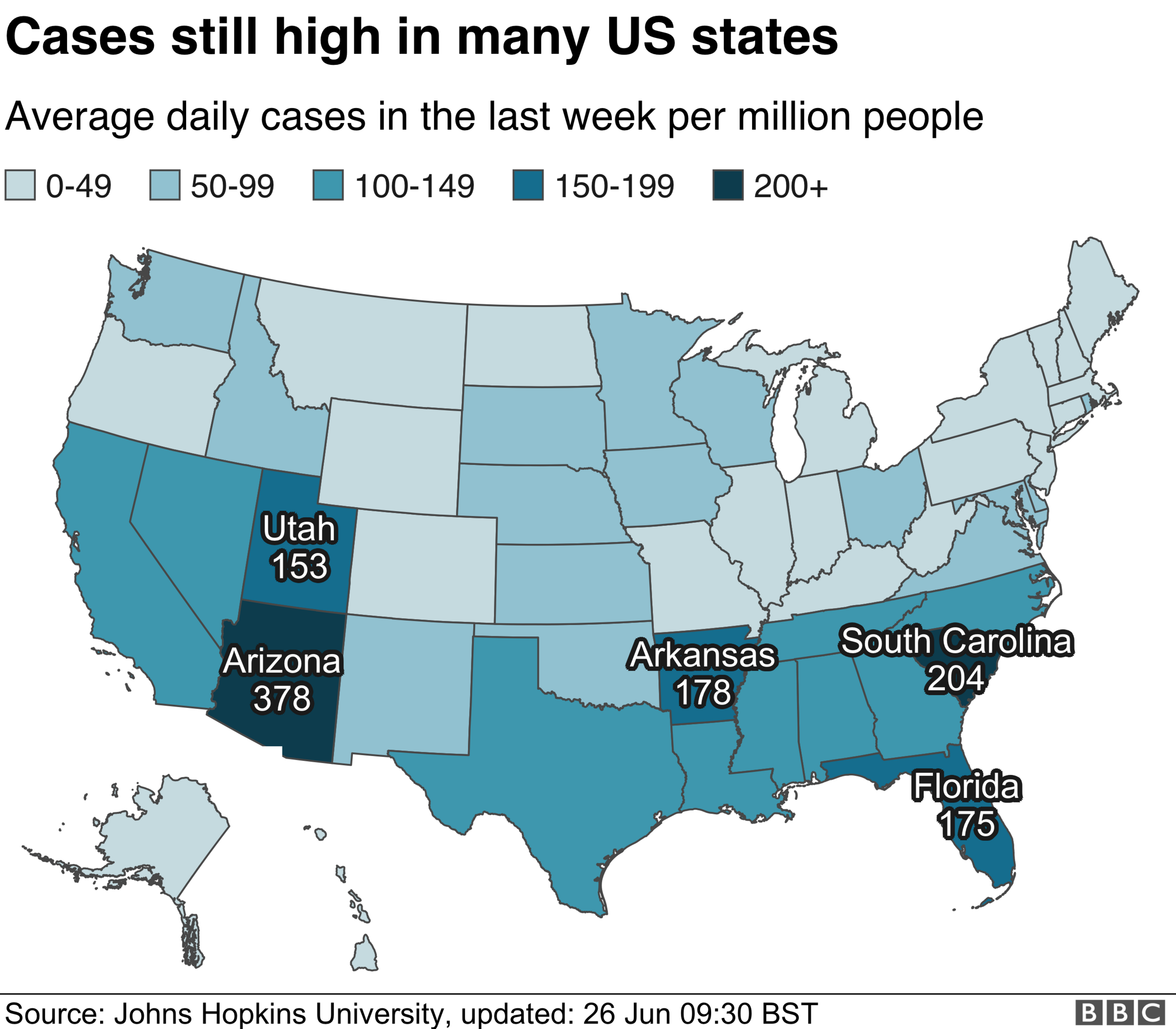
The CDC continues to advise the American public to maintain social distancing, wash hands frequently and properly wear a facemask or covering.
But masks have become increasingly politicised in recent weeks, with President Trump saying, external some people wear them primarily to show opposition to him.

Deaths are trending downwards - for now
Amid all of the fears about new hotspots, the most positive news in the US at the moment is that daily deaths continue to fall.
They peaked back in May when the outbreaks in the Northeast were at their most intense, with New York state alone registering around 1,000 a day. That figure has been below 50 in recent days.
However, deaths is a metric that lags behind cases and hospitalisations because it can take several weeks for those who are worst-hit to die from the disease. That means the consequences of the current spikes in cases won't be seen for a couple of weeks at least.
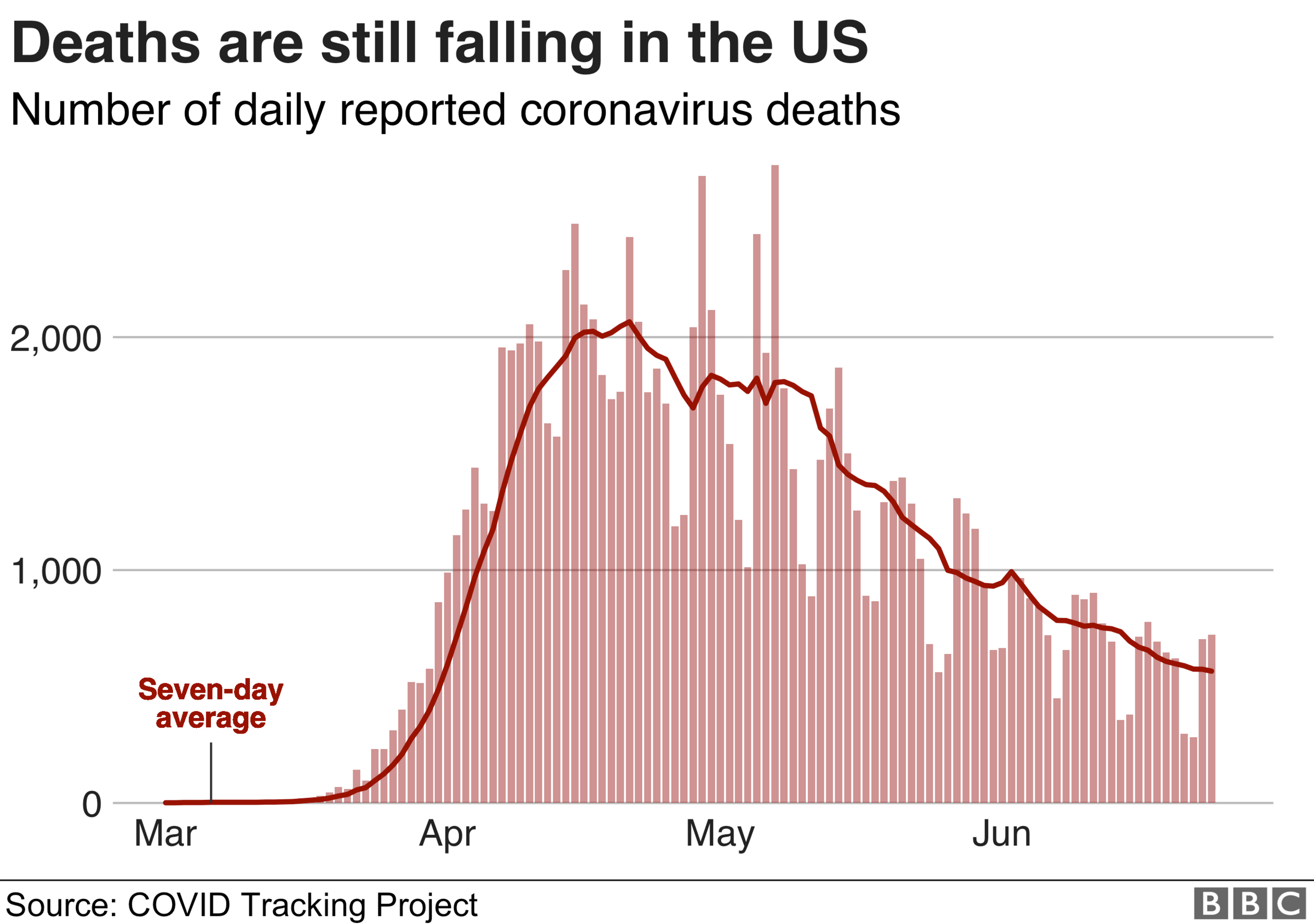

If we do see the number of deaths edging up, there will likely be some pressure on governors to reintroduce restrictions but Dr Fauci doesn't think that will happen.
"I don't think we're going to be talking about going back to lockdown," he said last week. "I think we're going to be talking about trying to better control those areas of the country that seem to be having a surge of cases."
Researchers are racing to produce a vaccine but it's clear that Americans, and the rest of the world, are going to be living with the virus until next year at the earliest.
So far, the US has recorded about 125,000 coronavirus deaths - the highest death toll in the world.
But one forecasting model, external run by experts at the University of Washington, says the US is on course to hit 180,000 by October - a month before the election.
The toll could be kept below 150,000 by that point, the experts said, if 95% of people started wearing facemasks or coverings in public. A survey, external of more than 4,000 Americans carried out by the CDC in May found 74% of them always or often wore one while in public.
- Published19 June 2020
- Published17 June 2020
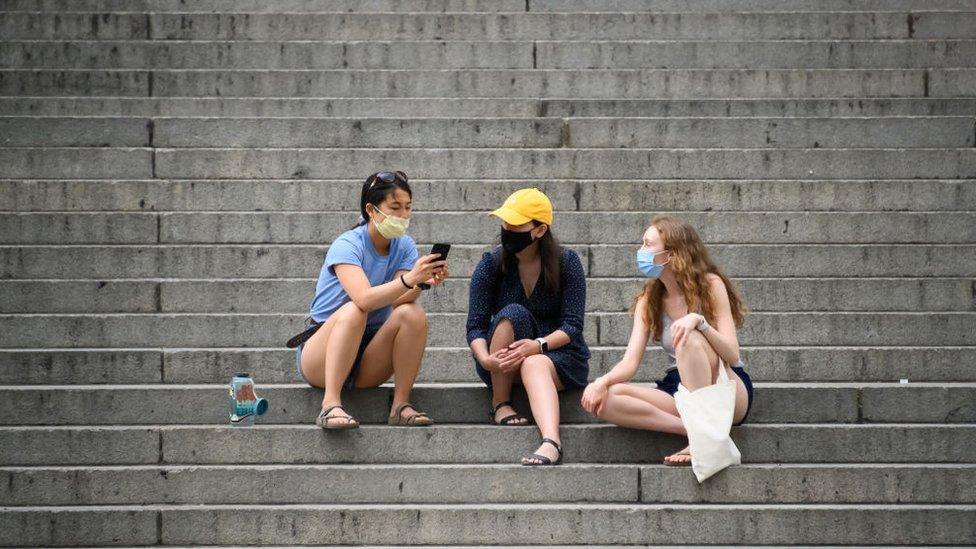
- Published17 June 2020
